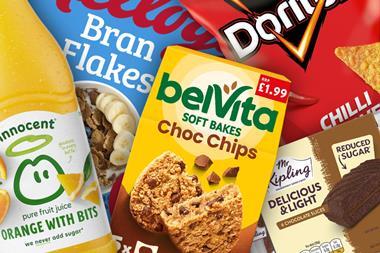
Influencers are big business in fmcg. From Mrs Hinch to mummy bloggers, brands are falling over themselves to team up with influencers to get their products in front of consumers and connect with that all-important millennial/Gen Z crowd.
But amid all the noise about ‘social media celebrities’ and ‘micro-influencers’, grocery brands are in danger of forgetting the original influencers: friends and family.
The power of these everyday influencers has been a constant for decades. In shopper surveys, the percentage of shoppers who trust recommendations from friends and family is always in the mid-80s or higher.
A McKinsey study found consumers were 50 times more likely to buy a product as a result of a recommendation by a friend, over receiving this message from a stranger, and word of mouth advertising generates twice as many sales as paid-for advertising.
Yet brands aren’t doing much with them, especially when it comes to sampling. That’s a huge missed opportunity, as these ‘IRL’ (in real life) influencers don’t just have more sway over purchasing decisions than online celebs, they can also get physical samples into their communities’ and peers’ hands for trial. Plus, they can talk about product benefits in everyday language, not marketing speak.
Brands have much to gain from providing these natural advocates with the right tools to spread the word about them. This could include giving them products to try and hand out; vouchers and literature; and packs or boxes that allow a product to be shown off at its best to friends or family, such as a special BBQ kit.
Bahlsen, for example, has been sharing its Pick Up products with community groups across the UK, while Coca-Cola’s NPD gave us the sharing can, specifically designed to be passed on.
Fmcg brands could also take inspiration from other sectors, such as health and fitness. The gym market has been using the ’introduce a friend’ model for years, using peer-to-peer recommendations to increase the customer base.
Pivoting your influencer strategy towards everyday influencers is not about how much product you can shift in a short space of time. It’s not about incentivising online influencers to promote from a distance. It’s about a decidedly human-centred approach.



















No comments yet